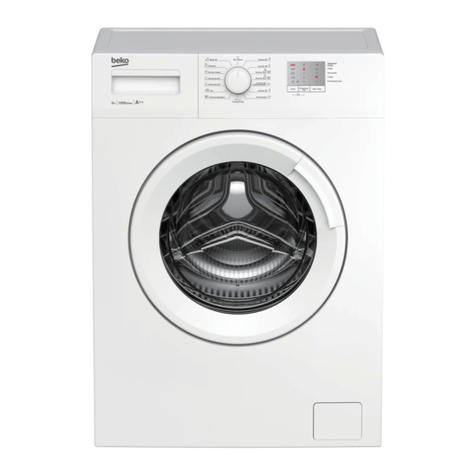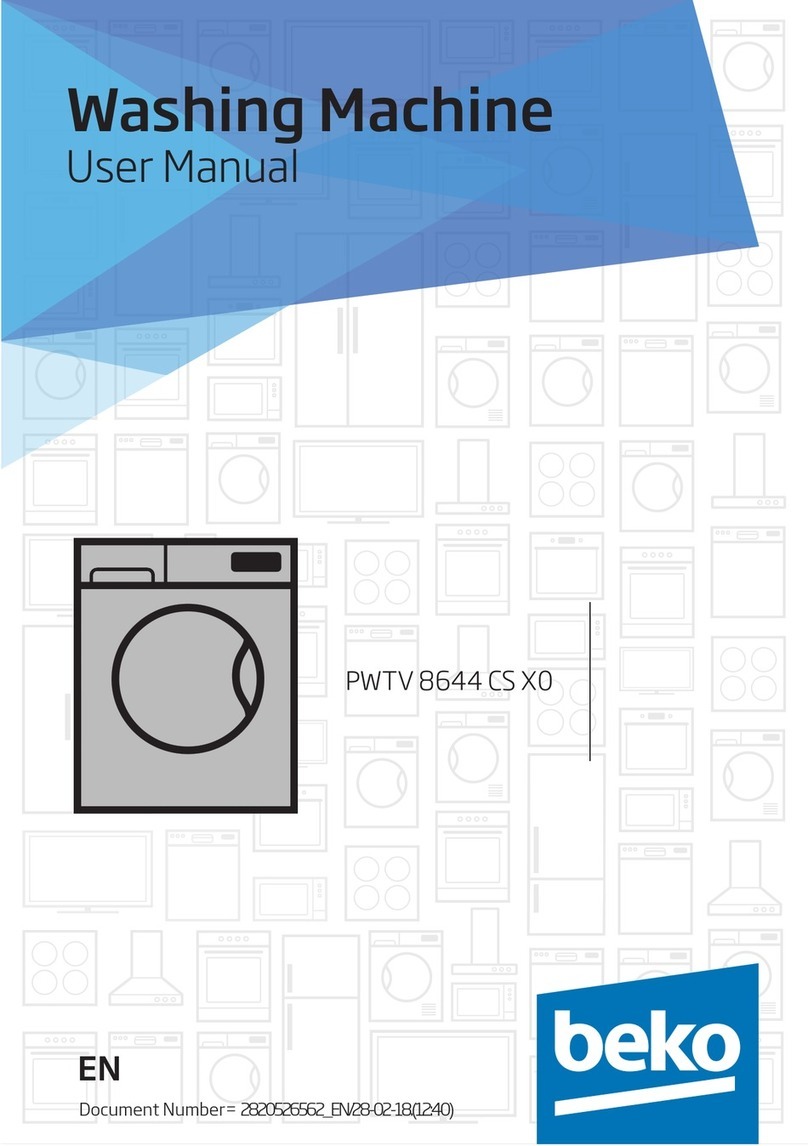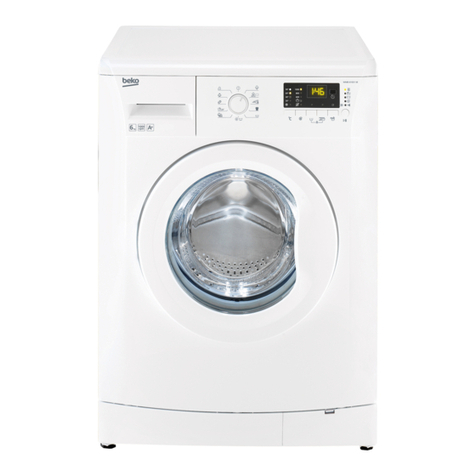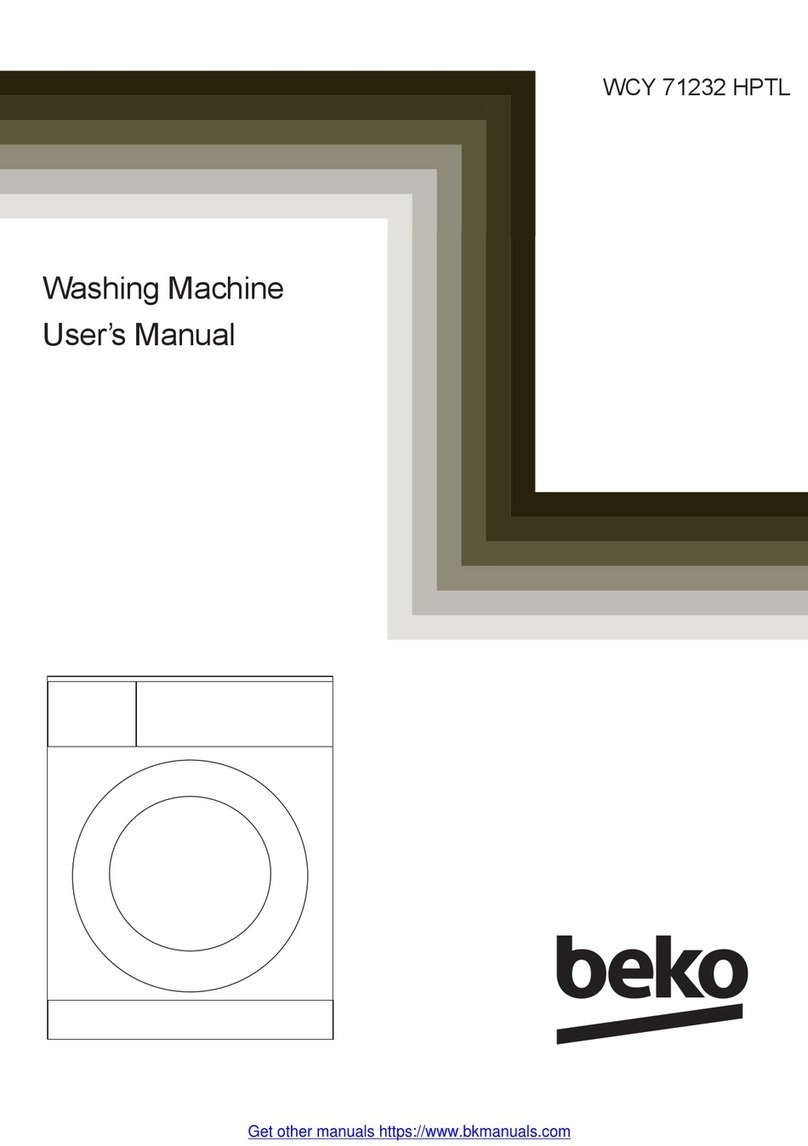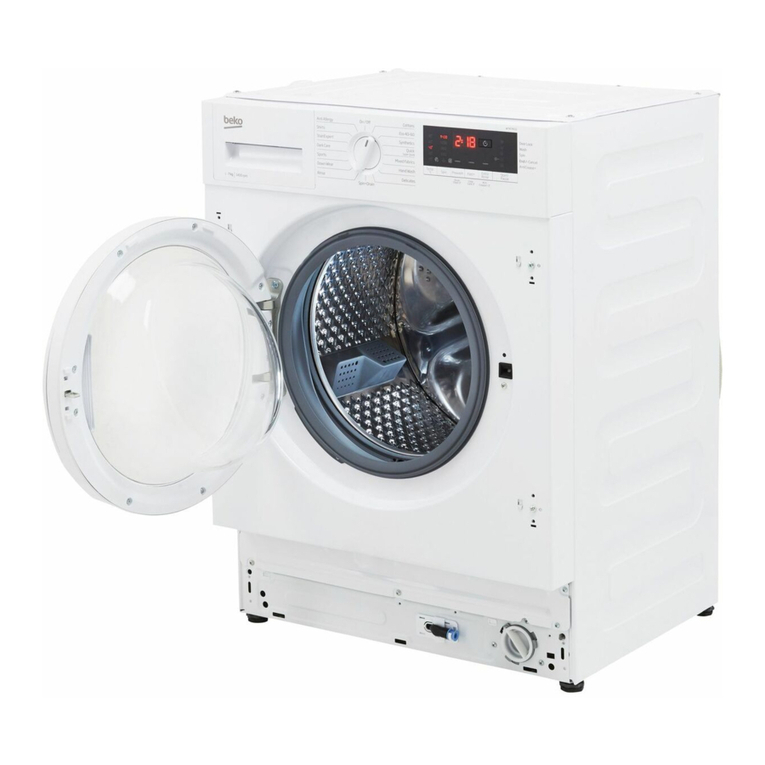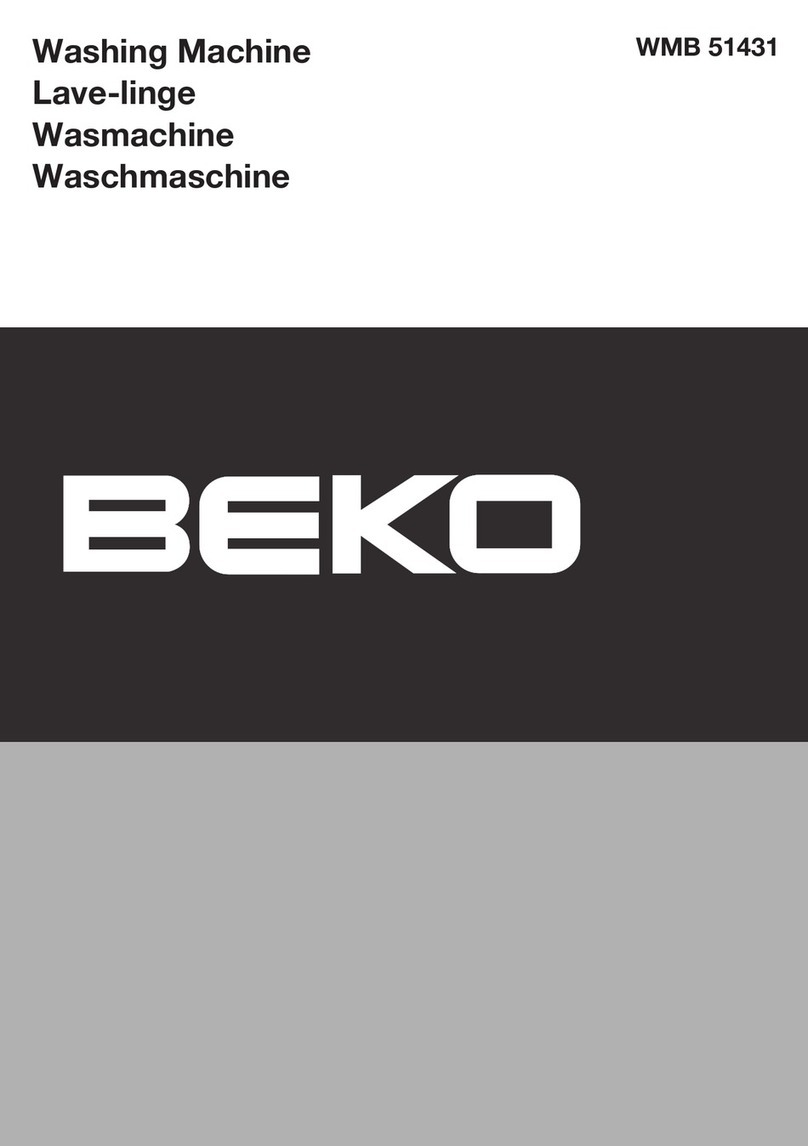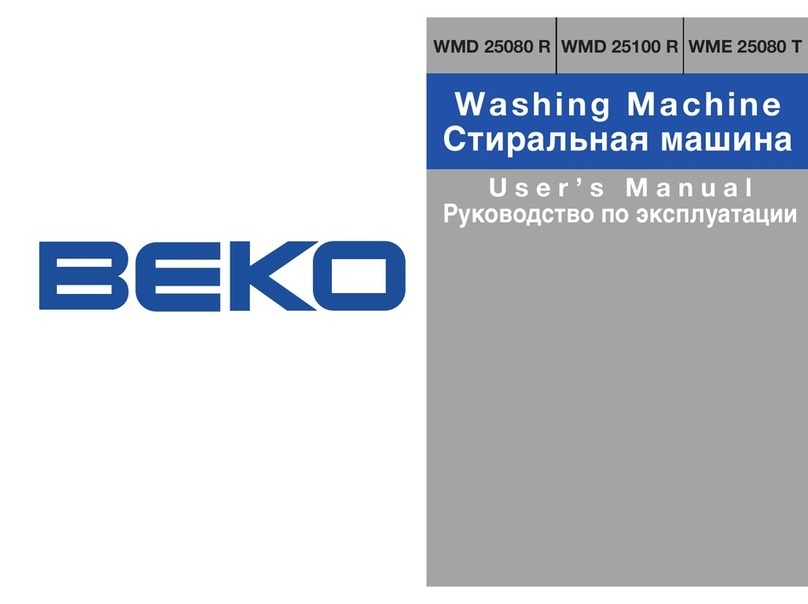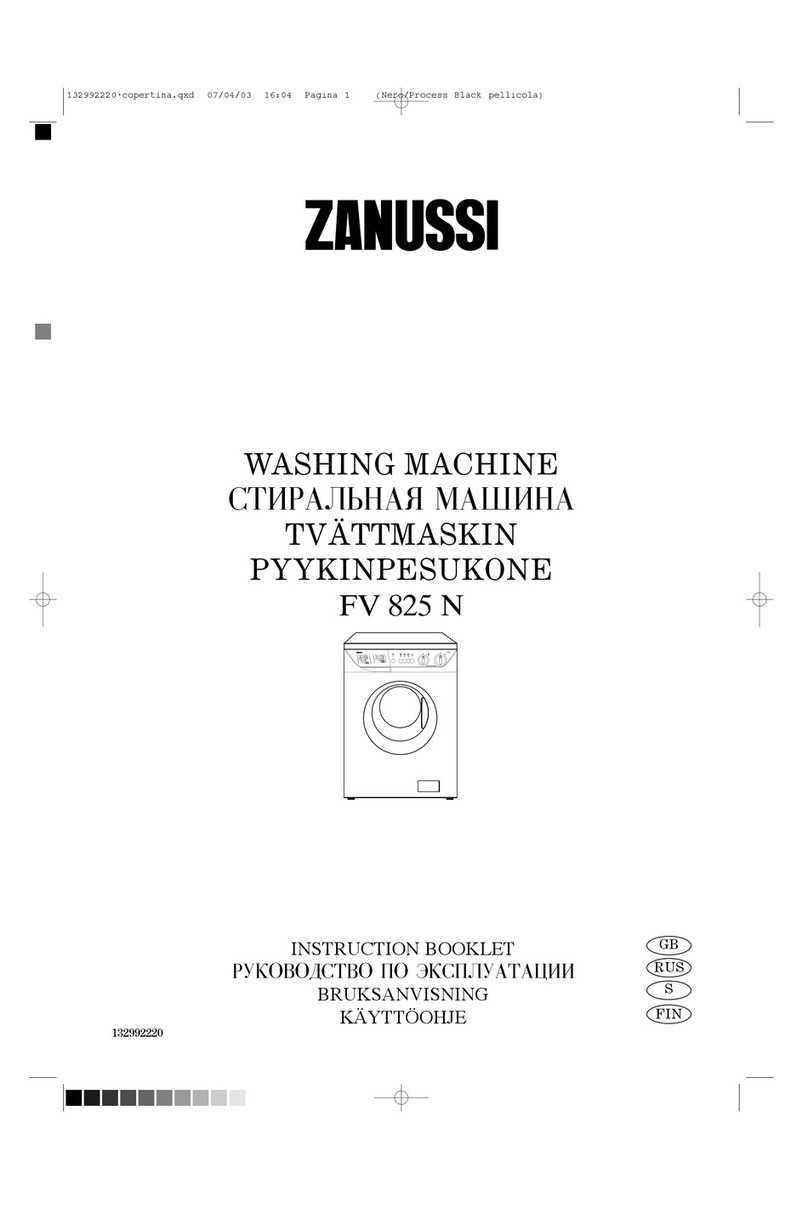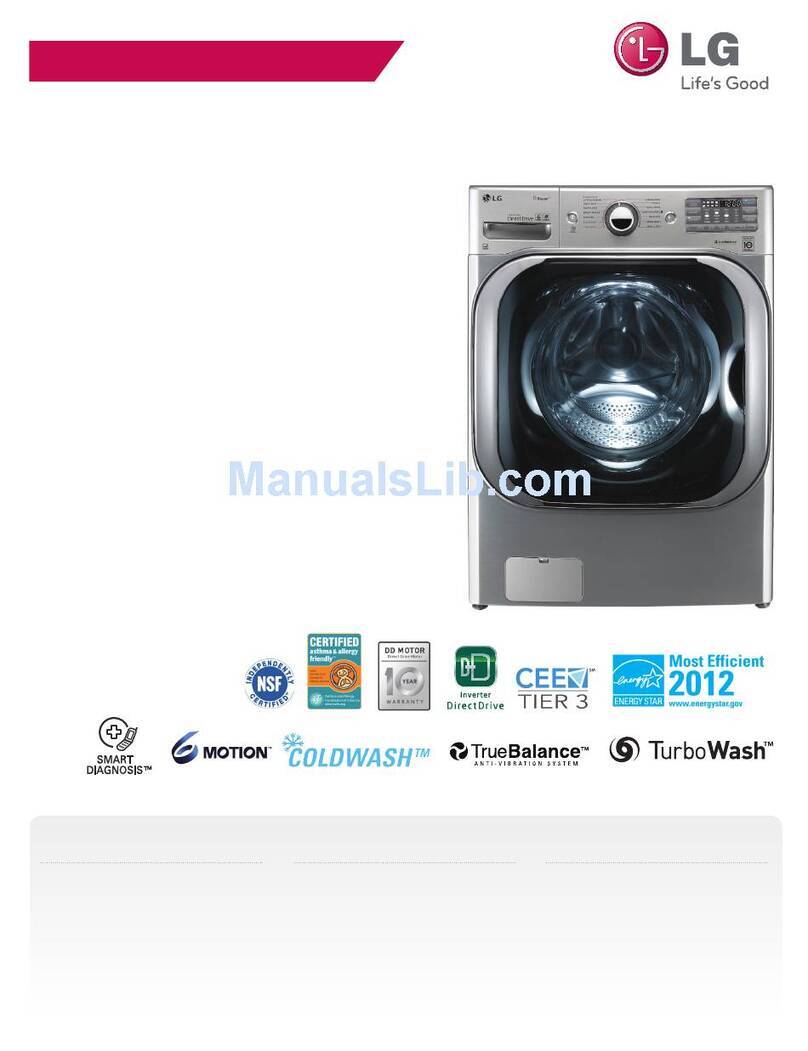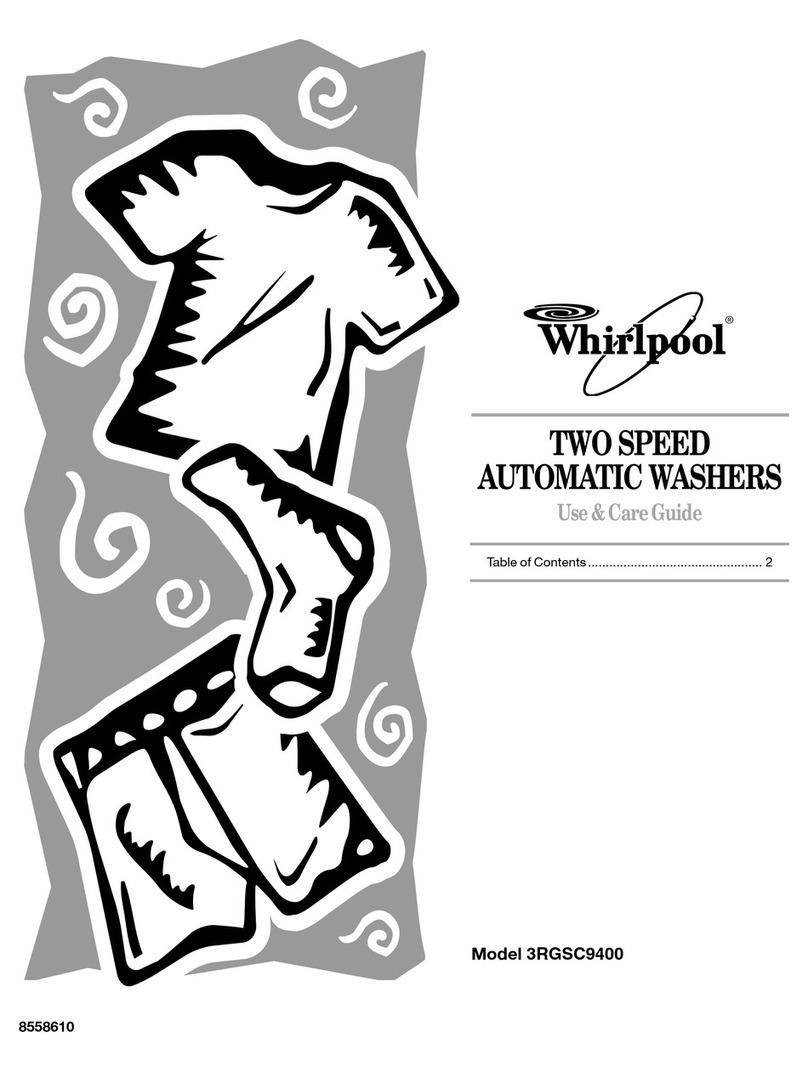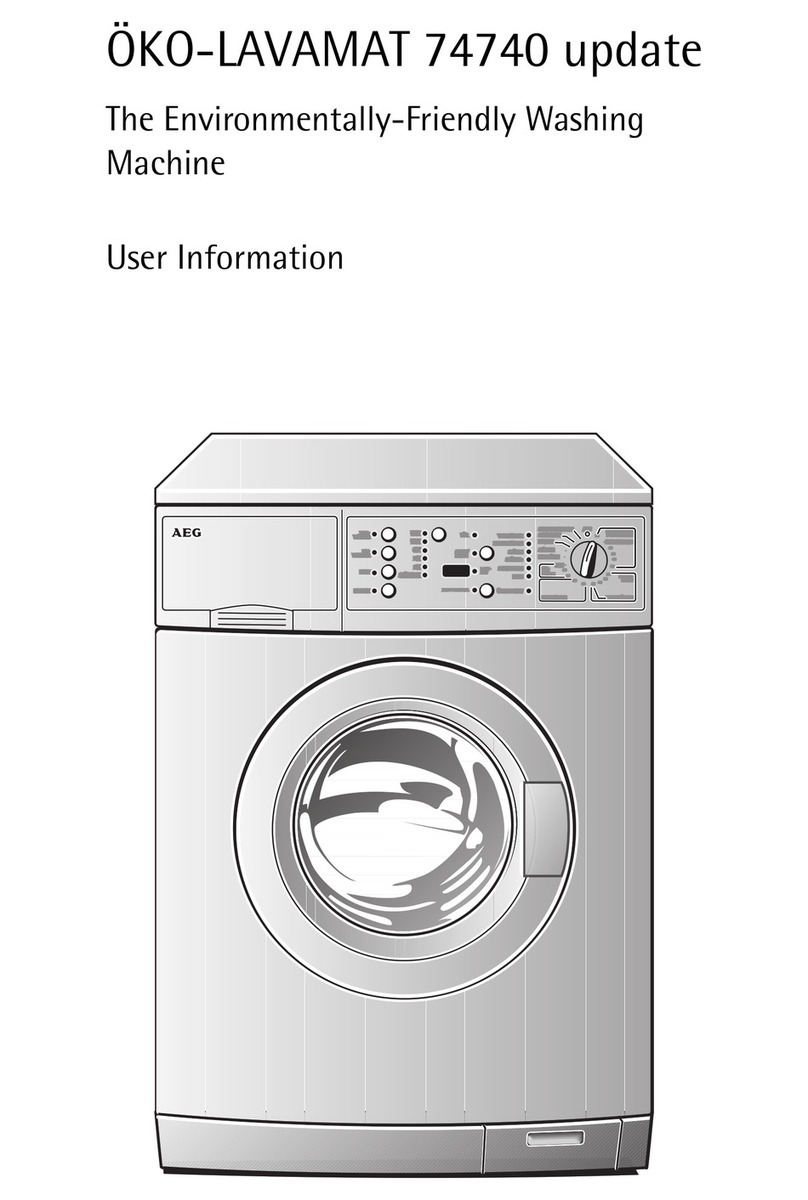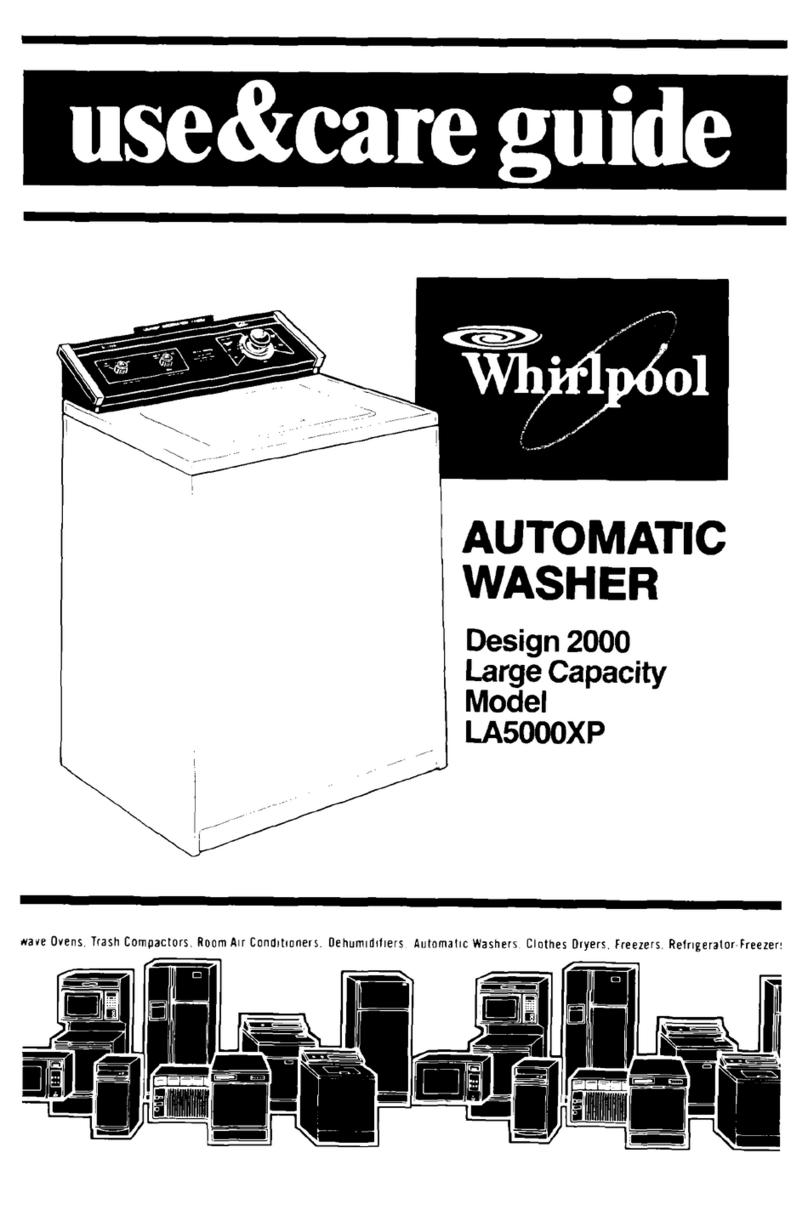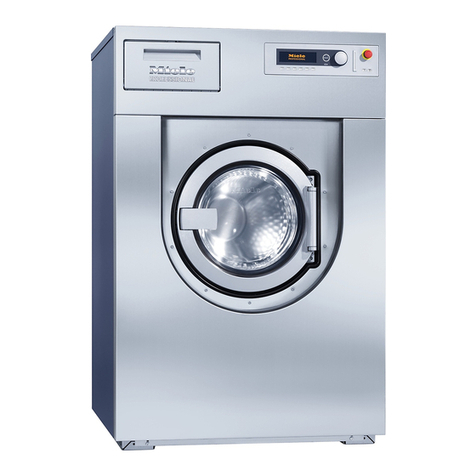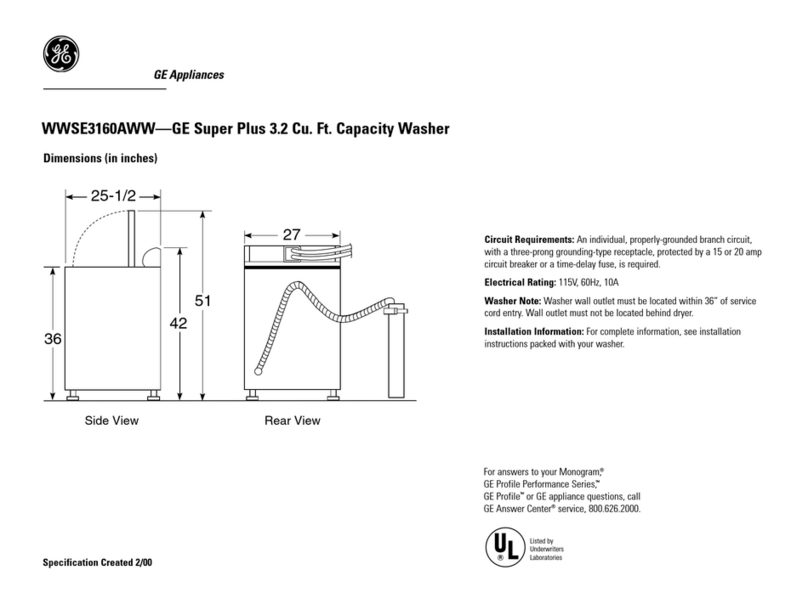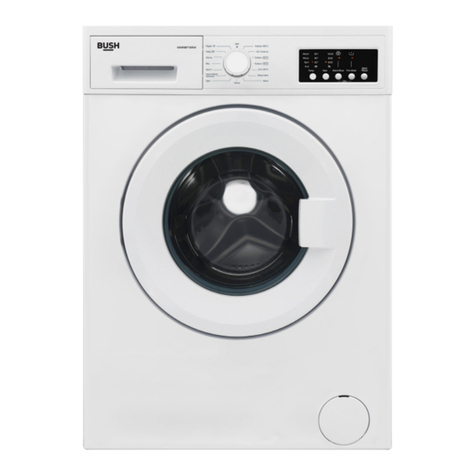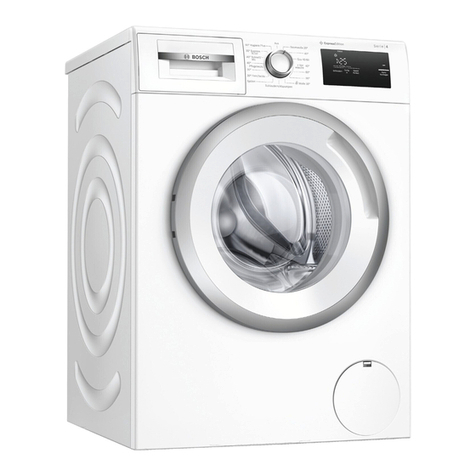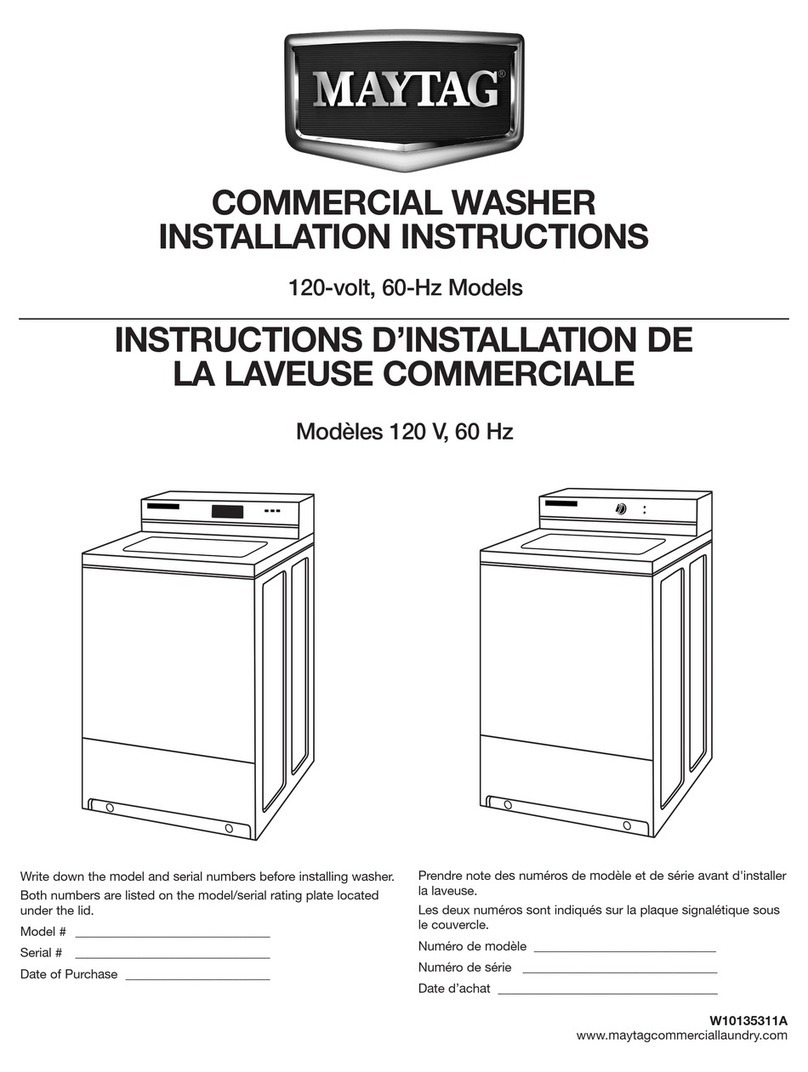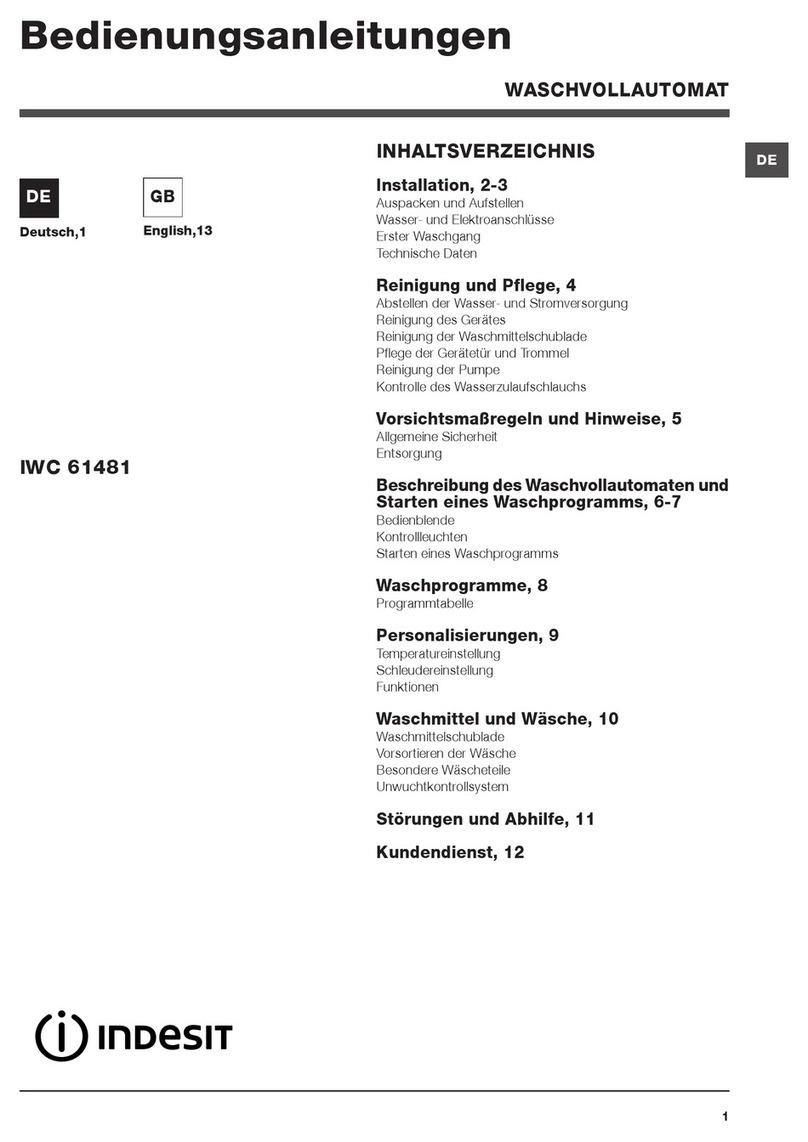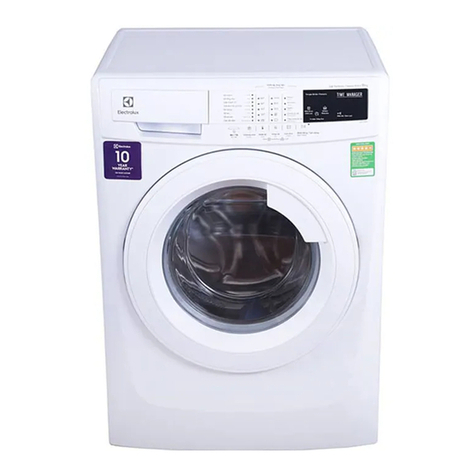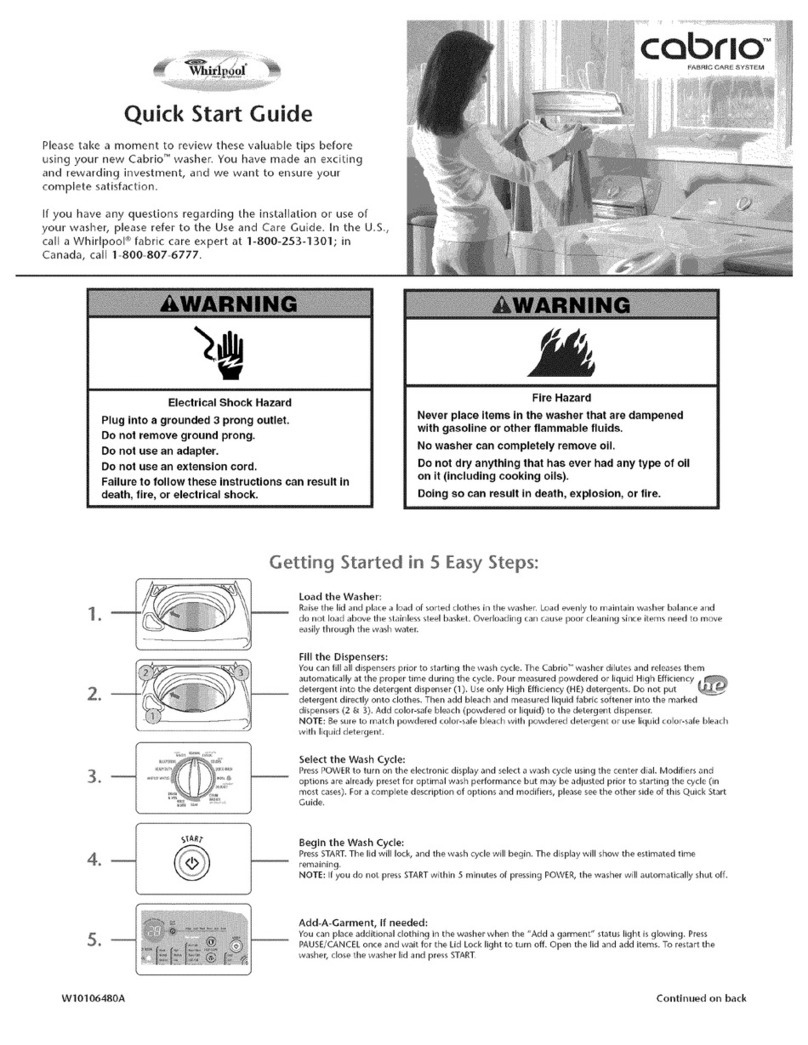• Connection must comply with national regulations.
• Power cable plug must be within easy reach after
installation.
• The voltage and allowed fuse or breaker
protection are specified in the “Technical
specifications” section. If the current value of the
fuse or breaker in the house is less than 16 Amps,
have a qualified electrician install a 16 Amp fuse.
• The specified voltage must be equal to your mains
voltage.
• Do not make connections via extension cables or
multi-plugs.
B
WARNING
Damaged power cables must be replaced by the
Authorized Service Agents.
2.8 First use
Before starting to use the product, make sure
that all preparations are made in accordance with
the instructions in sections "Important safety
instructions" and "Installation".
To prepare the product for washing laundry, perform
first operation in Cotton-90 programme. Before
starting the programme, put max. 100 g of powder
anti-limescale into the main wash detergent
compartment (compartment nr. II). If the anti-
limescale is in tablet form, put only one tablet into
compartment nr. II. Dry the inside of the bellow with
a clean piece of cloth after the programme has come
to an end.
C
INFORMATIONS
Use an anti-limescale suitable for the washing machines.
Some water might have remained in the product due to
the quality control processes in the production. It is not
harmful for the product.
2.9 Disposing of packaging material
Packaging materials are dangerous to children. Keep
packaging materials in a safe place away from reach
of the children.
Packaging materials of the product are manufactured
from recyclable materials. Dispose of them properly
and sort in accordance with recycled waste
instructions. Do not dispose of them with normal
domestic waste.
2.10 Transportation of the product
Unplug the product before transporting it. Remove
water drain and water supply connections. Drain
the remaining water in the product completely; see,
"Draining remaining water and cleaning the pump
filter". Install transportation safety bolts in the
reverse order of removal procedure; see, "Removing
the transportation locks".
C
INFORMATIONS
Never move the product without the transportation
safety bolts properly fixed in place!
2.11 Disposing of the old product
Dispose of the old product in an environmentally
friendly manner.
Refer to your local dealer or solid waste collection
centre in your area to learn how to dispose of your
product.
For children's safety, cut the power cable and break
the locking mechanism of the loading door so that it
will be nonfunctional before disposing of the product.
3 Preparaton
3.1 Things to be done for energy saving
Followng nformaton wll help you use the product
n an ecologcal and energy-effcent manner.
• Operate the product in the highest capacity
allowed by the programme you have selected,
but do not overload; see, "Programme and
consumption table".
• Always follow the instructions on the detergent
packaging.
• Wash slightly soiled laundry at low temperatures.
• Use faster programmes for small quantities of
lightly soiled laundry.
• Do not use high temperatures for laundry that is
not heavily soiled or stained.
• Do not use detergent in excess of the amount
recommended on the detergent package.
3.2 Sorting the laundry
• Sort laundry accordng to type of fabrc, colour,
and degree of solng and allowable water
temperature.
• Always obey the nstructons gven on the
garment tags.
3.3 Preparing laundry for washing
• Laundry items with metal attachments such as,
underwired bras, belt buckles or metal buttons will
damage the machine. Remove the metal pieces or
wash the clothes by putting them in a laundry bag
or pillow case.
• Take out all substances in the pockets such as
coins, pens and paper clips, and turn pockets




